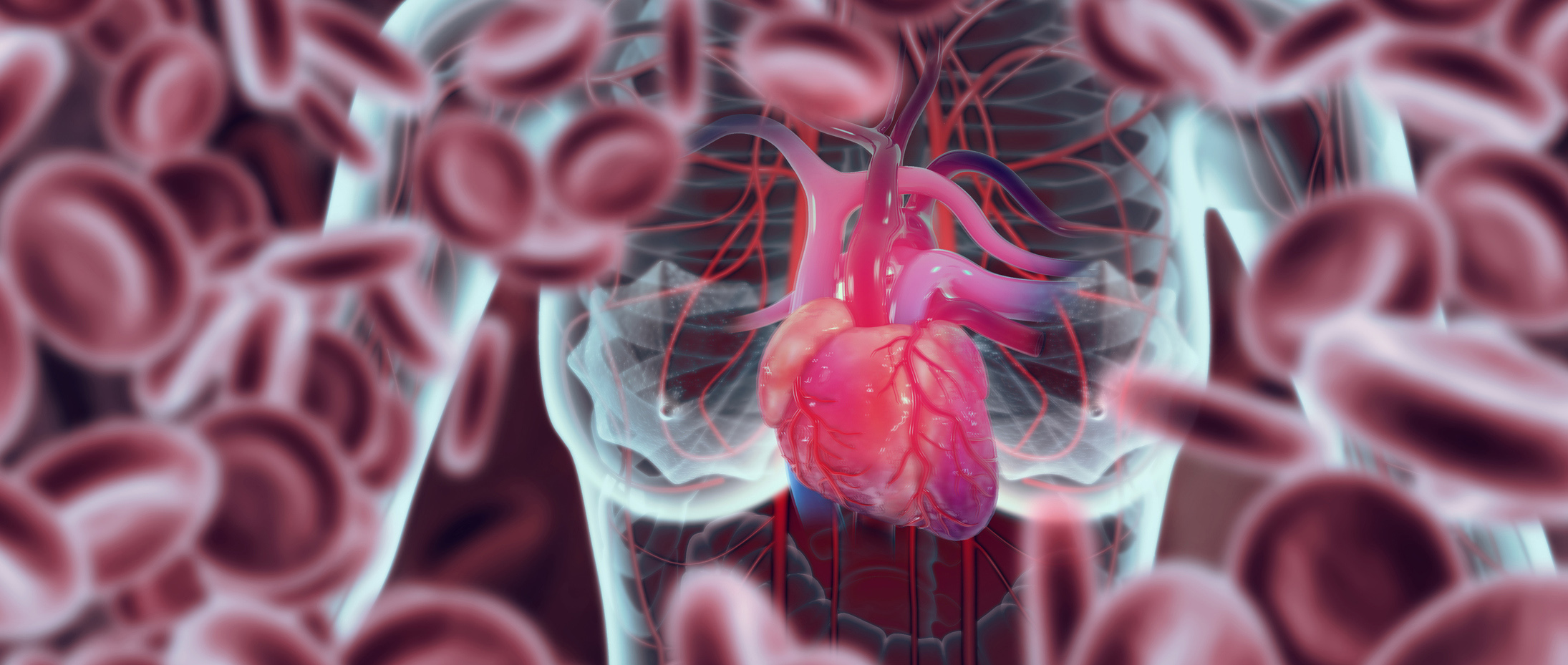Atopic dermatitis is associated with dysbiosis of the cutaneous microbiome. Characteristic is reduced bacterial diversity, with Staphylococcus aureus often being the dominant bacterial genus. In a recent study, it was shown that the proportion of Staphylococcus aureus is reduced in the course of therapy with tralokinumab. This was accompanied by an increase in the diversity of the skin microbiome.
The clinical picture of atopic dermatitis (AD) results from the interaction of various factors such as a disruption of the epidermal barrier and immunological mechanisms, psychological factors, and also a dysbiosis of the cutaneous microbiome [1,2]. Changes in the composition of the skin microbiome may influence the development and progression of atopic eczema [3]. By finding out more about the effect of biologics on the prevalence of Staphylococcus aureus (S. aureus) colonization and commensal bacteria of atopic skin, one is one step closer to understanding important mechanisms of action of these biologics in AD. Tralokinumab (Adtralza®) is an anti-IL13 antibody that has been approved in Switzerland since 2022 for the treatment of moderate to severe AD in adults. In a 2023 paper in the Journal of the American Academy of Dermatology by Beck et al. published study, researchers investigated the effects of tralokinumab on the skin microbiome in AD [7,9].
S. aureus colonizationcorrelates with AD severity
In the past, it has been shown several times that the extent of S. aureus colonizationis positively correlated with the severity of the disease [4–6]. The prevalence of skin colonization with S. aureus shows the greatest difference in the area of lesional skin compared to the healthy control group [3]. The reduced barrier function of the skin can be further compromised by S. aureus, with certain proteases further reducing the integrity of the barrier. Dysbiosis in acute AD relapses is thought to be influenced by epidermal barrier disruption and T helper (Th)-2 cell-mediated inflammatory processes, with interleukin (IL)-13 playing a pivotal role [7,8]. High levels of type 2 cytokines such as IL-4 and IL-13 throttle the skin’s production of antimicrobial peptides (AMP), which promotes S. aureus infectionsin AD [8]. This is because decreased expression of AMPs such as LL-37 and beta-defensins increases susceptibility to pathogens in AD patients [10].
AD is associated with a decrease in bacterial diversity
In parallel with the predominance of S. aureus, the skin microbiome in AD is characterized by a decrease in bacterial diversity. Thus, studies on the skin microbiome showed lower colonization of atopic skin with Gram-negative bacteria such as Acinetobacter as well as the Gram-positive Corynebacteria spp, Propionibacterium acnes, and Staphylococcus epidermidis [3]. Skin-colonizing bacterial commensals such as Staphylococcus epidermidis are capable of both activating resident dendritic cells and T lymphocytes to combat invading bacteria and inducing immune tolerance [3,11,12].
| Skin microbiome analyses Sampling was performed on skin lesions (5×10 cm) in the setting of moderate to severe AD on the upper and lower limbs and/or trunk using 4N6 FLOQSwabs® swab tubes. The microbiome profile was obtained at baseline, week 8, and week 16. Skin microbiome analyses were performed using 16S rRNA amplicon sequencing. Data on the incidence of S. aureus were collected from 802 randomized participants. For microbiome profiling, a total of 30,276 amplicon sequence variants (ASVs) were identified from 205 samples obtained from specimen swabs from 84 participants (59 in the tralokinumab arm and 25 in the placebo arm). According to taxonomic classification, 9130 ASVs were included in the analysis, representing 21 strains, 468 genera, and 791 different species of bacteria. according to [7] |
Tralokinumab therapy: reduction of S. aureus and increase in diversity.
Thus, influencing the microbiome as a therapeutic target of atopic eczema should, if possible, take into account both a reduction in colonization with S. aureus and an increase in commensal bacteria. The present study investigated the effect of tralokinumab treatment on the skin microbiome in lesional skin of adults with moderate-to-severe AD. Tralokinumab is a fully humanized, high-affinity monoclonal antibody that specifically neutralizes IL-13 and has a favorable efficacy and safety profile for the treatment of adult patients with moderate-to-severe AD [7,13,14]. The analysis of Beck et al. was based on data from ECZTRA 1 – a 52-week, randomized, double-blind, placebo-controlled, monotherapy phase III study in which adults with moderate-to-severe AD were randomized in a 3:1 ratio to subcutaneously administered tralokinumab 300 mg or placebo once every two weeks (q2w) for weeks 0 to 16 after receiving an initial loading dose (tralokinumab 600 mg or placebo).
| Analysis of biomarkers in serum samples Serum samples were collected from 299 participants (233 in the tralokinumab group and 76 in the placebo group) at baseline and at weeks 4, 8, 16, 28, and 52. Serum biomarkers were measured as follows: IL-13 and IL-22 by Singulex Erenna immunoassay; chemokine ligand (CCL)-17 and thymus and activation-regulated chemokine (TARC) by ELISA (enzyme-linked immunosorbent assay). Spearman correlation was used to correlate the frequency of S. aureus with serum biomarker levels. Serum total IgE and absolute eosinophil count were analyzed as part of standard clinical hematology laboratory diagnostics. according to [7] |
The skin microbiome and serum samples of various relevant biomarkers were analyzed using established methods (Box) [7]. Subsequent evaluations revealed that the composition of the cutaneous microbiome changed considerably under tralokinumab treatment. In particular, a decrease in the proportion of S. aureus and an increase in bacterial diversity were observed. Thus, the median percentage of S. aureus decreased by a factor of 20.7, from 1157 to 56 gene copies/cm2, over the course of 16 weeks of tralokinumab(q2w) treatment (p<0.0001). Placebo-treated participants showed a statistically non-significant decrease in the proportion of S. aureus gene copies by a factor of 2.1 (from 471 to 352 gene copies/cm2). In percentage terms, the proportion of S. aureus decreased by 38.9% and by 47.5% from baseline to week 8 and week 16, respectively (Fig. 1) . The percentage of bacterial genera other than staphylococci increased at week 8 and week 16.

The decrease in staphylococci is mainly due to the decrease in S. aureus. At baseline, S. aureus accounted for 32% of all bacteria in the skin microbiome in the tralokinumab arm; this proportion decreased to less than 8% over the course of treatment through week 16 [7]. In contrast, an increase was observed in commensal coagulase-negative staphylococci (CoNS) such as S. epidermis and S. capitis. CoNS are among those bacteria that express AMP.
In summary, the present study provided evidence that after successful treatment with the anti-IL13 antibody tralokinumab, the proportion of S. aureus is reduced and bacterial diversity is normalized.
Literature:
- Fölster-Holst R: The role of the skin microbiome in atopic dermatitis – correlations and consequences. JDDG 2022; 20(5): 571-578.
- Elias PM, Wakefield JS: Could cellular and signaling abnormalities converge to provoke atopic dermatitis? J Dtsch Dermatol Ges 2020; 18: 1215-1223.
- Kolb-Mäurer A: The cutaneous microbiome: outlook for new therapeutic approaches in atopic eczema. Act Dermatol 2017; 43: 518-523.
- Kong HH, Oh J, Deming C et al. Temporal shifts in the skin microbiome associated with disease flares and treatment in children with atopic dermatitis. Genome research 2012; 22: 850-859.
- Tauber M, et al: Staphylococcus aureus density on lesional and nonlesional skin is strongly associated with disease severity in atopic dermatitis. J Allergy Clin Immunol 2016; 137: 1272-1274.e3.
- Byrd AL, et al: Staphylococcus aureus and Staphylococcus epidermidis strain diversity underlying pediatric atopic dermatitis. Sci Transl Med 2017; 9(397): eaal4651.
- Beck LA, et al: Tralokinumab treatment improves the skin microbiota by increasing the microbial diversity in adults with moderate-to-severe atopic dermatitis: analysis of microbial diversity in ECZTRA 1, a randomized controlled trial. JAAD 2023; 88(4): 816-823.
- Brunner PM, Guttman-Yassky E, Leung DY: The immunology of atopic dermatitis and its reversibility with broad-spectrum and targeted therapies. J Allergy Clin Immunol. 2017; 139: S65-S76
- Drug Information, www.swissmedicinfo.ch,(last accessed Mar. 30, 2023).
- Ong PY, et al: Endogenous antimicrobial peptides and skin infections in atopic dermatitis. N Engl J Med 2002; 347: 1151-1160.
- Naik S, et al: Compartmentalized control of skin immunity by resident commensals. Science 2012; 337: 1115-1119.
- Volz T, et al: The role of the innate immune system in atopic dermatitis. Dermatologist 2015; 66: 90-95.
- Silverberg JI, et al: Tralokinumab plus topical corticosteroids for the treatment of moderate-to-severe atopic dermatitis: results from the double-blind, randomized, multicentre, placebo-controlled phase III ECZTRA 3 trial. Br J Dermatol 2021; 184: 450-463.
- Wollenberg A, et al: Tralokinumab for moderate-to-severe atopic dermatitis: results from two 52-week, randomized, double-blind, multicentre, placebo-controlled phase III trials (ECZTRA 1 and ECZTRA 2). Br J Dermatol 2021; 184: 437-449.
DERMATOLOGIE PRAXIS 2023; 33(2): 40-41












